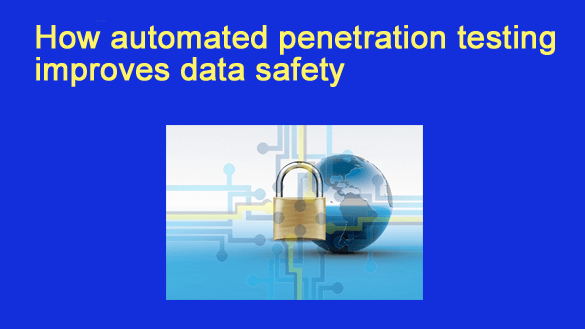 In a world where data breaches make headlines almost weekly, cybersecurity can’t be an afterthought—it has to be part of the foundation. Businesses of all sizes store and process sensitive information, and the risks of a breach can be devastating, both financially and reputationally.
In a world where data breaches make headlines almost weekly, cybersecurity can’t be an afterthought—it has to be part of the foundation. Businesses of all sizes store and process sensitive information, and the risks of a breach can be devastating, both financially and reputationally.
One of the most effective tools to stay ahead of threats is automated penetration testing. It’s like having a friendly “ethical hacker” constantly checking for vulnerabilities before a real one does.
What Is Automated Penetration Testing?
Traditional penetration testing often involves a team of experts manually probing systems for weaknesses. While effective, it’s usually performed only a few times a year. Automated penetration testing takes this process and runs it continuously with specialized software, identifying risks in real time.
This approach doesn’t replace skilled security professionals—it complements them by flagging issues faster and more frequently, so they can act before problems snowball.
Why It Matters for Data Safety
Think of your company’s network as a castle. The walls, gates, and guards are your standard security measures—firewalls, encryption, and access controls. Penetration testing is the regular stress test to see if any gates are unlocked or if there’s a hole in the wall. Automated penetration testing ensures these checks aren’t a once-in-a-blue-moon event but a constant process.
If you’re running on cloud platforms, like AWS, the stakes are even higher. Tools designed for AWS penetration testing can identify misconfigurations, weak access controls, or overlooked vulnerabilities that could give attackers a way in.
Key Benefits of Automated Penetration Testing
Here’s why businesses are increasingly making the switch:
1 – Speed and frequency – Threats evolve quickly, and frequent testing means you can patch weaknesses before they’re exploited.
2 – Cost-effectiveness – Automated systems reduce the labor cost of manual testing while still providing detailed insights.
3 – 24/7 coverage – Continuous monitoring offers peace of mind, especially for global operations that never “close.”
4 – Compliance support – Regular testing can help meet industry security standards and audit requirements.5 – Scalability – Works across large and complex infrastructures without requiring a proportional increase in manpower.
Real-World Impact of Neglecting Testing
Skipping regular penetration tests can lead to costly consequences. According to IBM’s 2024 Cost of a Data Breach Report, the average global cost of a data breach is $4.45 million—the highest it’s ever been. And that’s not counting the loss of customer trust, which can take years to rebuild.
Automated testing can help organizations spot potential breaches before they happen, significantly lowering both financial and reputational damage.
When to Use Automated Pen Testing
While “always” might sound like an exaggeration, continuous testing is most critical when:
- You’ve recently migrated systems to the cloud.
- Your business handles sensitive customer or financial data.
- You’ve made significant infrastructure changes.
- You’re in a highly regulated industry, like finance or healthcare.
Balancing Automation and Human Insight
Automation is powerful, but it’s not a silver bullet. The best approach combines automated tools with skilled cybersecurity experts who can interpret results, prioritize fixes, and understand the nuances of your unique setup. Automated tools can identify the cracks in the wall—but humans decide which ones need immediate repair and how to fix them without disrupting business.
The Bottom Line
Cybersecurity isn’t about being perfect—it’s about staying one step ahead. Automated penetration testing gives businesses the speed, frequency, and precision they need to identify vulnerabilities before attackers do. In today’s fast-moving threat landscape, that can make all the difference between a near-miss and a headline-grabbing breach.